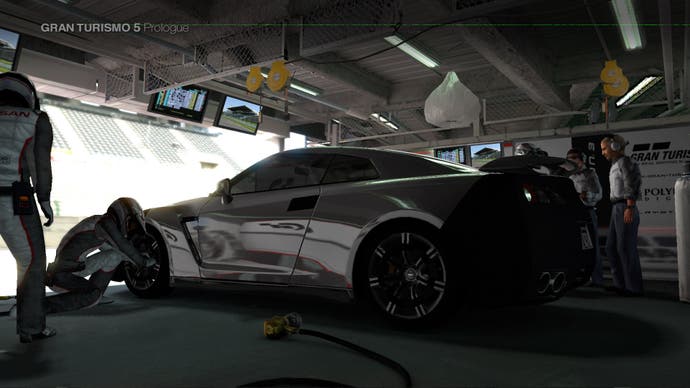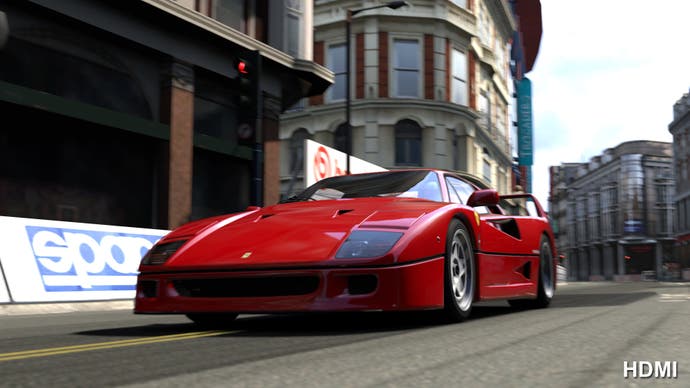Digital Foundry vs. HDMI video
?1.50 vs. ?100 cable, and PS3/360 outputs put to the test.
The results in the table below are a victory for the concepts of common sense and frugality. The output is 100 per cent identical, whether you are spending £1.50 or £100 on a lead. HDMI guarantees you a pristine image - how good the image is comes down to the quality of your screen, and your perception of how it looks.
The only point of interest we'll add to this is that the hash for the original BMP picture file we ran on the XMB Photo Viewer was different to the capture. And if we captured the capture (in essence, creating a second generation grab of the original image) the hash changed again. But we will assume this is all down to the inner workings of the PS3 - perhaps reformatting the 24-bit RGB image to confirm with the XMB framebuffer, resulting in a tiny difference invisible to the human eye. Changing cables always resulted in the same, adjusted hash. If you'd like to see our captured images, feel free to download them.
| Cable | Captured Frame Hash (MD5) |
|---|---|
| Generic £1.50 Cable | c566ee4eb90de1c47daa78a0f3605442 |
| Monster 1000HD | c566ee4eb90de1c47daa78a0f3605442 |
| Microsoft Cable | c566ee4eb90de1c47daa78a0f3605442 |
| Sony PS3-branded Cable | c566ee4eb90de1c47daa78a0f3605442 |
On the face of it, the conclusion is that you can run any HDMI cable - no matter how cheap - and get identical results. However, very poor quality cabling can present image problems in certain circumstances, and the accepted wisdom that with digital you either get an image or you don't isn't exactly true. A low quality, very long HDMI cable could work fine at 720p for example, but could introduce digital artifacts at 1080p.
But the important thing to point out is that there is no real parallel with the world of analogue cables. Gold-plated cables didn't really do much on the older analogue leads, and do nothing at all in the digital world - and all the other insulation techniques described in the HDMI Truth Bomb will have zero bearing on the effectiveness of the average HDMI cable. Traditional analogue cables could be vulnerable to external interference that results in image degradation, but if a digital signal is interrupted, this manifests in a completely different way.
Here's what happened a couple of years back when we ran Gran Turismo 5 Prologue at 1080p through a low-quality HDMI repeater. There's no degradation to the vast majority of the image, but where the signal was affected, the corrupt data is fairly easy to see.


Going back to the introduction for this piece, HDMI cabling really is a no-brainer when it comes to the purchasing decision. The bits either get through the cable in one piece, or they don't. If they don't, you won't see analogue artifacts like ghosting or electrical interference patterns, you'll get digital corruption that is obvious to see: in this sense, it either works or it doesn't. Independent testing suggests that just about any HDMI cable works fine at lengths of up to four metres: more than enough for just about any home cinema or "gaming den" setup.
But what actual guarantees do we have that what is coming out of the HDMI port is indeed the digitally lossless signal we looking for? There has long been debate around our Face-Off screenshots which show darker, richer colours on the Xbox 360 versions of many games. The lushness of the images tends to make the PlayStation 3 shots look washed out in comparison, and there are still the occasional suggestions that we're running the PS3 games in limited-range RGB mode (we've been full-range RGB since the year dot, even though most HDMI capture cards still don't work with it properly).
The basic accuracy of our PS3 HDMI shots was established a while ago in our Uncharted 2 tech analysis where the XMB Photo Export option in the game allowed us to compare the images, showing a match in colour balance. To make sure it's not a flash in the pan, we re-ran the experiment with Gran Turismo 5, and once again, the comparison shows nothing untoward - certainly nothing compared to what you'll see on the next page.


